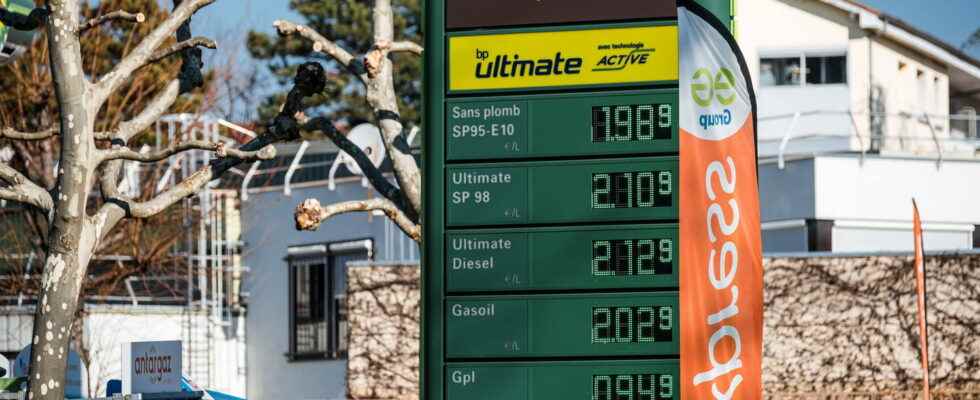PRICE OF PETROL. Fuel prices have been skyrocketing for several months and the war in Ukraine is beginning to have its effects on prices at the pump. How to explain it, are there any tricks and how to find the cheapest gas station near you? Here is some practical information.
[Mis à jour le 8 mars 2022 à 17h04] New heights in sight for gas prices! For motorists, going to the service station has been like torture for several months and it will last and turn into real torture. The bar of 2 euros per liter is about to be crossed in many pumps in France, reinforcing the concern. And it’s not over ! As the war in Ukraine begins to affect the global economy, the price of a barrel of oil continues to rise and the repercussions will be felt at the pumps. The most alarmist even evoke a possible peak at 3 euros per litre! E85, eco-driving, abandoning the car for public transport when possible… The loopholes are not numerous. In this context, how to try to scratch a few precious cents per litre?
In addition to moderating your travels, practicing carpooling if you can, the best thing is still to compare the prices charged in the service stations around your home. Tedious? Not that much since many sites offer this service on the internet. This is the case of our partner Essence&Co, whose search engine you can find below. It is possible to compare fuel prices at service stations near you. Available on Android or iPhone, it offers daily fuel prices based on user feedback to indicate current prices.
The government websiteprice.fuel.gouv.fr” also offers you price statements by department and type of fuel (Be careful to clearly differentiate unleaded 95, 98 or E10). The price statements are updated on a weekly basis. What will help you find the cheapest gas stations through an interactive map listing the gas stations near you.
As you have noticed, there are sometimes sometimes substantial price differences depending on the service station: between distributor brands (supermarkets in particular) and oil group stations, the difference can sometimes seem significant. It is explained by various parameters including the brand image but also the famous additives. You may know them by their trade name. the fuel Excellium for example in the Total network has many additives. Incorporated into the fuel, they are used to improve its quality and therefore its performance. Also intended to protect the engine or the tank, they also act on higher prices, which sometimes gives rise to controversy over their usefulness. Marketing argument used to justify these prices or real benefit for the car, the debate is lively.
What is the share of taxes in the price of gasoline at the pump? According to Total, taxes represent “the most important part of the price of fuel”. In 2018, according to the company, the taxes collected by the State represented for example “63% of the price of Unleaded 95-E10 and 60% of that of diesel”. Gasoline tax is in fact divided into two different taxes: VAT, and the domestic consumption tax on energy products (TICPE). There is also the general tax on polluting activities (TGAP). The TICPE is also higher on gasoline than on diesel. Depending on gasoline prices, the TICPE represents nearly 70 cents on gasoline, 60 cents on the price of a liter of diesel.
The carbon tax is a tax on CO2 emissions. It was implemented in 2014. It was to increase on January 1, 2019 and add 3 cents more to the price of a liter of diesel and 6 cents to the price of a liter of lead-free. Nothing happened: the government decided to cancel its increase when it could have brought 3.9 billion euros in additional revenue to the State. This decision follows the discontent of the yellow vests at the end of 2018. Note that the carbon tax, a component of the TICPE, finances only “very little” the ecological transition.
According to a Senate report on revenue for 2016, “out of the 4 billion euros of additional revenue expected from the carbon component in 2016, 3 billion euros are returned to companies under the tax credit for Competitiveness and Employment (CICE), and 1 billion euros for households, through reduced VAT rates applicable to energy renovation work on housing and in favor of social housing and intermediate housing”. For the Senate, the increase in the carbon tax therefore results from a “logic of budgetary return” and is not particularly used to finance the ecological transition.
